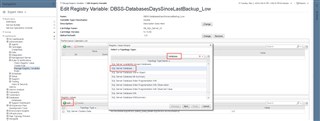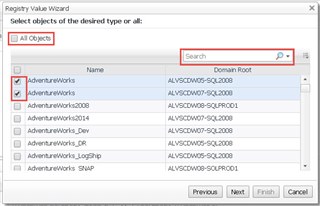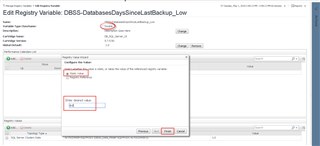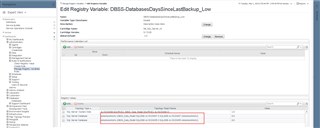A common question is how to make an exception for 1 or 2 particular databases for certain rules in Foglight. A good example is the "days since last backup" rule for SQL Server. The global default applies to all databases. It's possible from the Databases dashboard to change the setting for a particular instance, or to add a database to an exclude list, but an exception to the default can't be done there.
In behind the scenes, rules use registry variables (mostly) to control rule firing conditions. In the case of the days since last backup rule, the variable is named "DBSS_DatabaseDaysSinceLastBackup_Low".
Navigate to Administration -> Rules & Notifications -> Manage Registry Variables, and paste that value into the search window. Click on the variable name to edit it.
Next, click the Add button in the lower pane. This is where the exception value will be made. Look for the topology type "SQL Server Database".
Uncheck the "All objects" box, and search for the database(s) and check those.
Note that this registry variable is a datatype of "double". Enter the value for the number of days with a ".0" and then finish.
Go back to the main edit page and refresh. The complete topology object name including instance appears. Foglight evaluates these scoped values first, followed by scheduled values (different value can be used at a different time of day) and then finally the global default.
If you found this post exceptional, please give it a five star rating on the right.
For more information about Foglight, and to download a free trial, please visit the product page below:







